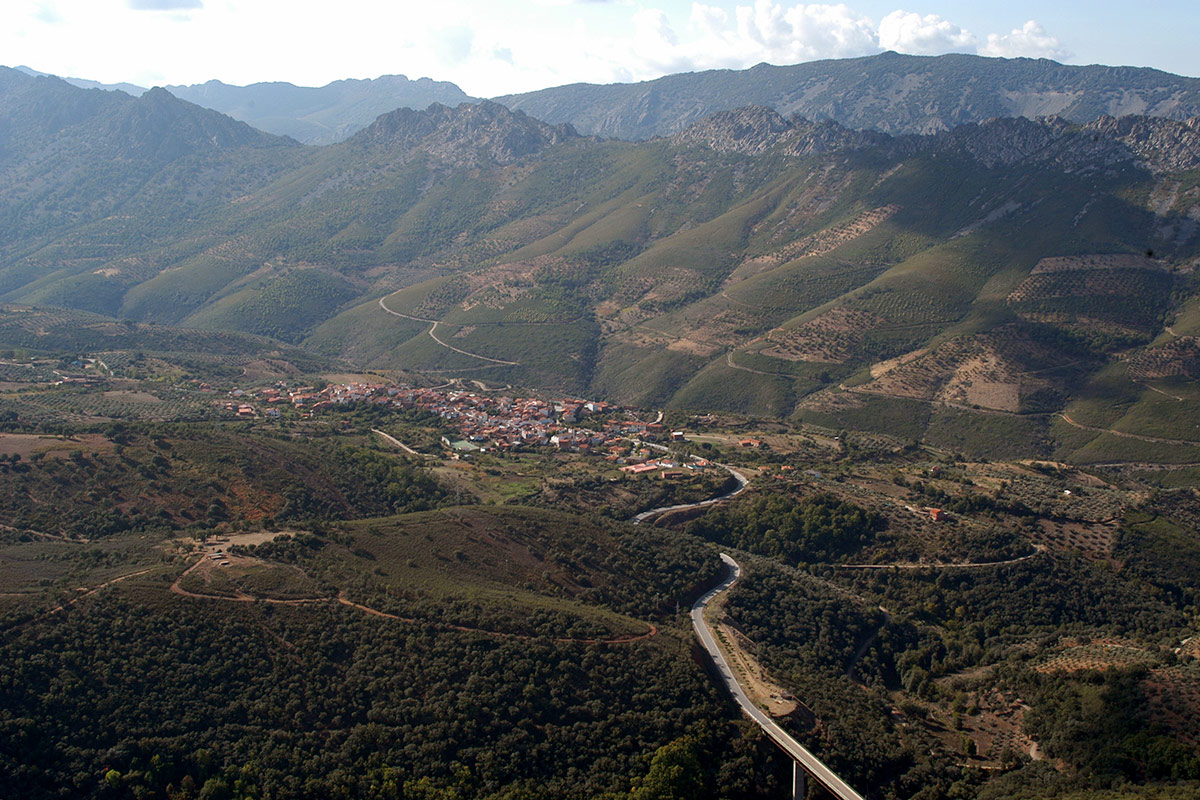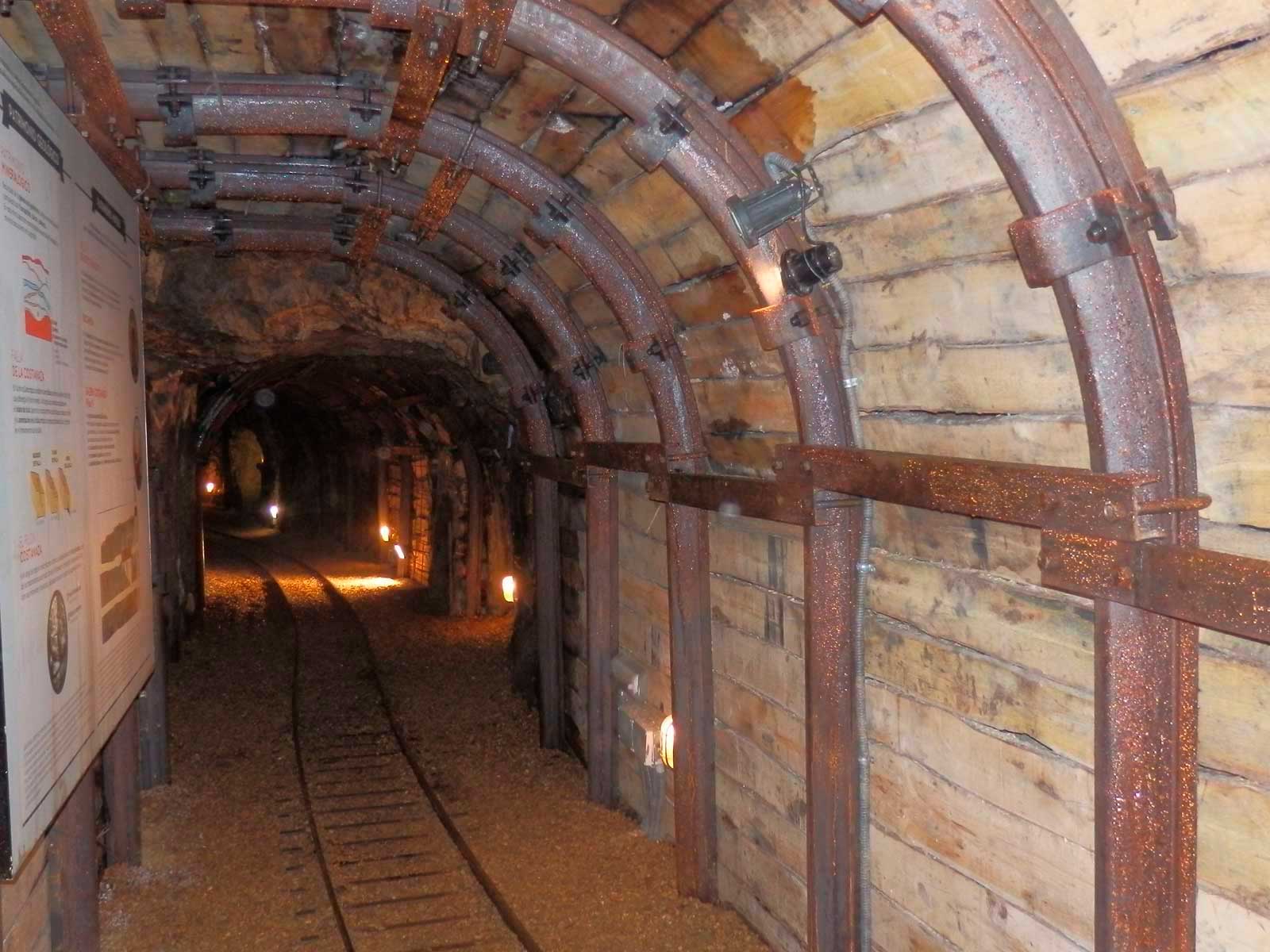TOP 10 EXPERIENCES IN VILLUERCAS-IBORES-JARA NOT TO BE MISSED
The quality of the sky of the Geopark is ideal for enjoying stargazing once the last lights of the day have been turned off.
You will contemplate with the naked eye the main constellations at the different times of the year, you will learn to get your bearings with the stars, and you will get to know lots of interesting things about the universe and its origin: planets, cumuli, nebulae, double stars, galaxies, red giants…
Explore the Geological Itinerary of La Villuerca by car
The crag of La Villuerca is the highest point of the mountainous massif to which it gives its name and the first geosite described in the Villuercas-Ibores-Jara Geopark.
If you want to get an idea of the immensity of this landscape the best thing is to ascend the crag of La Villuerca on the EX-118 road and then on an old military trail which is the highest road in all Extremadura. From there you will be able to see from the synclines of the River Viejas and Santa Lucía as far as the anticline of the River Almonte.
Access is on a surfaced track which starts from the hill of the Chapel of El Humilladero at kilometre 4 of the EX-118.
Discover the Chestnut Trees of Calabazas and the Cave Interpretation Centre
In the Villuercas-Ibores-Jara Geopark there are many spots, routes, viewpoints, and geosites which are worth getting to know. Among them is the geosite of the Chorrera de Calabazas (Pumpkin Waterfall) where a handful of imposing centenary chestnut trees still remain although most of them have dried up. The hiking route of the Chestnut Trees of Calabazas starts from the village of Castañar de Ibor; it is simple and circular of barely 12.5 km but will surprise you. As always in the case of chestnut trees, it is advisable to follow the route in autumn.
Time stands still in the pavement cafés of Guadalupe
It is not often that you can combine the pleasure of eating, having a coffee, or sampling the local wine in an open-air café with the privilege of being opposite a World Heritage monument or in the streets of a Historical Artistic Ensemble of great beauty.
In the pavement cafés of the Plaza de Guadalupe, the Parador de Turismo, or the Hostelry you will lose track of time; in this matchless peaceful setting you will forget rushing about and go in for contemplation.
The vertical Geopark
If you like climbing, don’t miss the chance to do so in the Villuercas-Ibores-Jara Geopark.
The quartzites make their way through the impressive defiles of the River Ruecas to form vertical walls which are ideal for climbing. The environment of the Geopark reveals its splendour from on high while you are accompanied by the flight of the birds of the area. There is no doubt that this activity gives us a whole new perspective of the Geopark and the defile of the River Ruecas.

Sweeten your palate with Geobees
Beekeeping is one of the traditional trades of this Geopark and knowledge of it has been passed from generation to generation and is linked to the use of the terrain. You can be a beekeeper for a day! You will get to know the essential work which a beekeeper has to carry out throughout the year. Among other things you will learn what an apiary is and what life in a beehive is like; you will get to know its inhabitants and the work each of them does.
You will visit one of our apiaries and will take part in activities such as lighting the smoker and opening a hive and viewing its different parts. You will wear a beekeeper’s suit to make your visit to the apiary gratifying, enriching, and safe. The day finishes with a workshop for tasting different varieties of honey together with other local products.
Time of year: June, July, August, and September, weather permitting
Further information: www.geoabejas.com
See the lights go out from the Risco Carbonero
The Geoparque can be more fully enjoyed from the heights. Its panoramic views show this territory in all its splendour. At certain times of the day the spectacle is amazing.
You can access the Risco Carbonero from the CC-20 road which connects Guadalupe with the village of Navatrasierra. At km 34.5 a forest trail to the right takes us to the top via the foot of the Cerro Fortificado (Fortified Hill).
Watching the night fall from here is a memorable experience.
Location
Visit the Costanaza Mine
You can discover the activity of mining and its important role throughout history on this interesting and entertaining visit.
The Costanaza Mine was abandoned in 1946; it continues to be a magnificent example of industrial architecture.
With a rich past of exploitation it goes down to a depth of 210 metres on 14 floors. Only the upper two can be visited. At one time it produced 50% of the Spanish production of phosphate.
The guided tour allows the observation of geological formations and aspects of work in the mines (props, shafts, drilling…). The visit begins at the Phosphate Interpretation Centre in the former laboratory of the mine and continues in the arsenal, which includes a black room of fluorescent minerals, to finally go down the mine and view two of the old galleries. Finally the tour includes the Vicente Sos Baynat Geological and Mining Museum.
Visits only by appointment; please call 927 360 180

Take a dip in the Charco de la Nutria
Near Cañamero can be found the Charco de la Nutria (Otter’s Pool), one of the best natural locations of the Villuercas-Ibores-Jara Geopark and a must in summer. Its waters extend as far as the natural swimming pool of Ruecas.
In addition to cooling off with a swim we can descend the river to enjoy the pools. The area has been equipped with a rest area in the shade of huge trees which is very near the cave paintings of the Cueva Chiquita
Take a walk to the Acueducto de las Herrerías
This spectacular circular hiking route starts and ends in Campillo de Deleitosa, and covers some 6 kilometres through the Garganta de Descuernacabras. For part of the way you walk inside an old canal built for the production of electricity.
On the route we will come to the Acueducto de las Herrerías; this fine and elegant monument is built on a curve and is in an excellent state of repair.
Viewing the aqueduct from different angles is a highly recommendable experience for all visitors to the Geopark who enjoy hiking.
Recommendations:
- Ask for information in the village of Campillo de Deleitosa.
- The best time of the year is spring or autumn. In summer only on cooler days or first thing in the morning to avoid the heat.
- Wear suitable clothing and footwear and take plenty of water as there are no fountains on the way.
